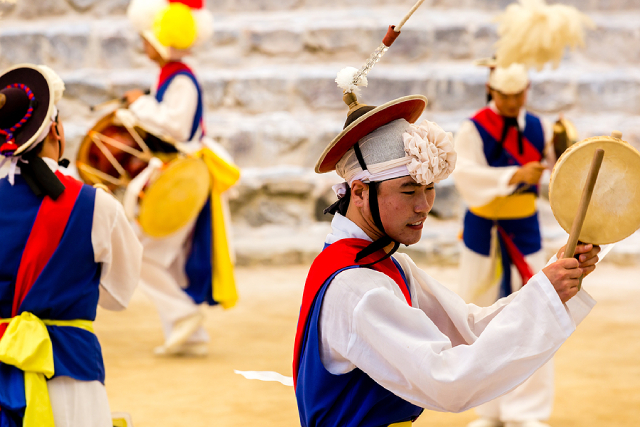While Korea is best known for K-pop, there is a lot more that goes into the nation’s rhythms and melodies. A lot of the country’s soul and sound is developed by traditional Korean folk music, many of which you’ll never catch anywhere else in the world!
Using an eclectic array of music forms that combine storytelling and various types of instrumental pieces, here are some of the most famous musical genres every student should explore as a supplement to their Korean language course in Singapore and fully immerse themselves in the culture!
1. Sanjo (산조)
The literal meaning of sanjo is to be scattered. Referring to the tomes of music and its rhythm, it features a solo instrumental music performance that is usually accompanied by a drum (called the janggu) and follows a rhythmic progression that maintains the order from slow to fast to faster.
Born of a highly improvisational spirit, it has been linked to the American jazz and blues tradition, and many Koreans strongly identify with this music, which quickly grew to be the greatest instrumental genre of the 19th century.
2. P’ansori (판소리)
P’ansori is a long vocal and percussive music played by one singer and one drummer. Commonly known by some as Korean folk opera, its name stems from two words: pan (“open space”) and sori (“sound”), a reference to the public squares and open venues where performances originally took place.
Every song is dramatically performed by a narrator accompanied by a drummer, and the lyrics involve one of five different stories, with tales such as “The Song of Ch’unhyangga” and “The Song of the Underwater Palace” – each one revolving around the stories of love, bravery and sacrifice.
3. Pungmul (풍물)
Pungmul is a Korean folk music tradition that was typically performed by farmers and includes singing, drumming and dancing. The unique composition of costumes, instruments and choreography is the highlight of pungmul – notice the iconic bupo-nori – a hat dance that demonstrates the elegance of the movements in sync with the music and resembles the blossoming of a flower.
Today’s pungmul has now been modernised and combined with jazz, rock and even classical music, with a new style of pungmul called samul nori popping up – bringing the traditional and outdoor ritual to world fame and into concert halls.
4. Sinawi (시나위)
Sinawi is an improvisational genre of Korean folk music which was traditionally performed to accompany dancers in Shaman ceremonies. It is often played alongside another melody to bring energy into the dancers. The rhythms of this music were inspired by sanjo and p’ansori as well.
Often performed in small ensembles and traditionally composed of haegeum and daegeum flutes, as well as janggu and buk drums.
Conclusion
Every culture or tradition has its music that depict the ancient history of the place. They show the attributes that were put together to make a place come into being. Just by listening to the music and understanding it, there is a lot that anyone can learn about a new culture.
Other than exposing yourself to music, there are many other ways to boost your learning of the Korean language, such as taking classes at a Korean language school in Singapore. With native Korean teachers and systemic, structured and engaging teaching methods, you’ll find yourself learning and being connected to the Korean culture faster than ever before!


